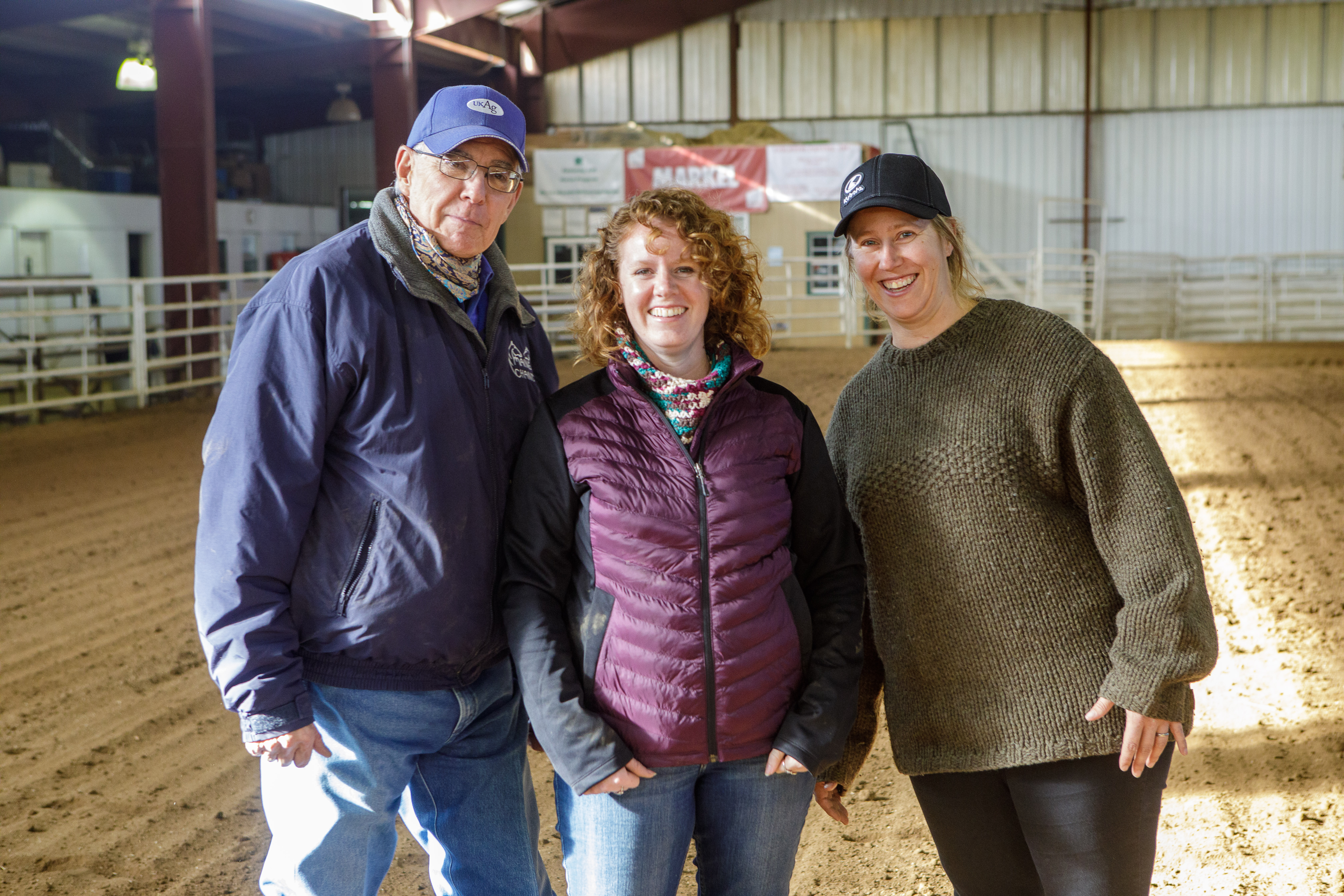Unique research could improve indoor equine and livestock environment
Unique research could improve indoor equine and livestock environment


Plenty of research exists surrounding outdoor equine and livestock arenas, but when it comes to indoor facilities, University of Kentucky College of Food and Environment researchers are breaking new ground with a multi-year study.
“This is an area that has become of greater interest to Cooperative Extension clientele across the state,” said Bob Coleman, UK extension horse specialist. “I get asked about it often from people who are building their facilities from the ground up. They are thinking about what the ground’s going to look like, indoor and outdoor, and there’s just been such a lack of information out there.”
Coleman is working with UK agricultural engineer Morgan Hayes and biosystems and agricultural engineering graduate student Staci McGill to study indoor arena conditions affected by a host of variables including air temperature, humidity, ventilation, air speed, horse activity and outdoor conditions. With 13 cooperating arenas, the researchers have been installing measurement devices and collecting data they will use to determine best management practices for building and maintaining indoor facilities.
“We have sonic anemometers to measure air speed from any direction, which is really nice in these arenas where we don’t know exactly where the air’s going to come from,” Hayes said. “Sometimes there are doors and windows open; sometimes not. Sometimes there are fans on and sometimes not. This device allows us to record horizontal air movement in any direction.”
Hayes, Coleman and McGill visit each facility to check the equipment and collect data. They are also measuring ground temperature and roof temperature with a thermal camera.
“We are looking for spatial and temporal variability and to see the differences in the summer and winter,” Hayes said. “If we see less air movement and more humidity issues, then we know we have a wintertime challenge. It’s a little bit different than the summertime challenge, which may be more of a temperature issue.”
Hayes said many of the cooperators are very invested in getting the study results and can assist researchers with very little trouble. Owners like Bruce Brown, at Lakeside Arena in Frankfort, record the activities that go on in the arena, so researchers can correlate the data.
Brown built Lakeside, a 108,000 square-foot arena, to fill a need for an all-weather facility for horse shows and other events.
“I judge horse shows around the country and a lot of the ideas you see here I’ve taken from other places I’ve been,” Brown said. “Anything I can do to improve the exhibitors’ experience here and improve our methods of working the arena, hauling the manure, housing the horses and the exhibitors … it’s important to me … The exhibitors are not only clients, they are also our friends, and we want them to have a very friendly experience here.”

Staci McGill and Bob Coleman install environmental monitoring devices in Lakeside Arena. Photo by Matt Barton, UK Agricultural Communications Specialist
To fulfill her master’s degree requirements, McGill began the research in 2018 as a partnership between UK CAFE and the UK College of Public Health in an effort to better understand horse and human health. They started with a survey that drew more than 450 responses, 77% of which were concerned with dust, moisture levels and lack of air movement in indoor facilities. Originally from Chesapeake, Virginia, McGill then got funding from the U.S. Department of Agriculture’s National Institute of Food and Agriculture for a predoctoral fellowship and used those surveys to begin developing design guidelines and recommendations for engineers, project managers, construction companies and the equine industry as a whole on how to build better indoor arenas. She plans to draft a formal set of research-based guidelines before graduating with her doctoral degree in spring 2023.
“People spend a lot of money building these facilities,” McGill said. “We want it to be something that lasts for decades. The main purpose of this study is to gain a better understanding of what’s going on in these facilities and provide recommendations for farms and owners about how to build great facilities.”
Coleman said the multidisciplinary team makes the results stretch to a wide audience.
“The cool thing about our team is that everybody brings something different to the table,” he said. “That’s really important to me. I look at what Staci and Dr. Hayes bring in; I need to understand the engineering component. I don’t need to know how to calculate it, but I need to understand it and ask the right questions that will help my clientele. We spend a lot of time talking about our observations—what’s working, what’s not, what could be better. We’re looking at all these things through a different lens, and it certainly has expanded my knowledge and my vision. From my perspective, this is all about making it right for the horses. If they are happy and comfortable, the owners will be as well.”
This material is based upon work that is supported by the National Institute of Food and Agriculture, U.S. Department of Agriculture, under award number 2020-67034-31729. Any opinions, findings, conclusions or recommendations expressed in this publication are those of the author(s) and do not necessarily reflect the view of the Department of Agriculture.
Ag Equine Programs Biosystems Ag Engineering

